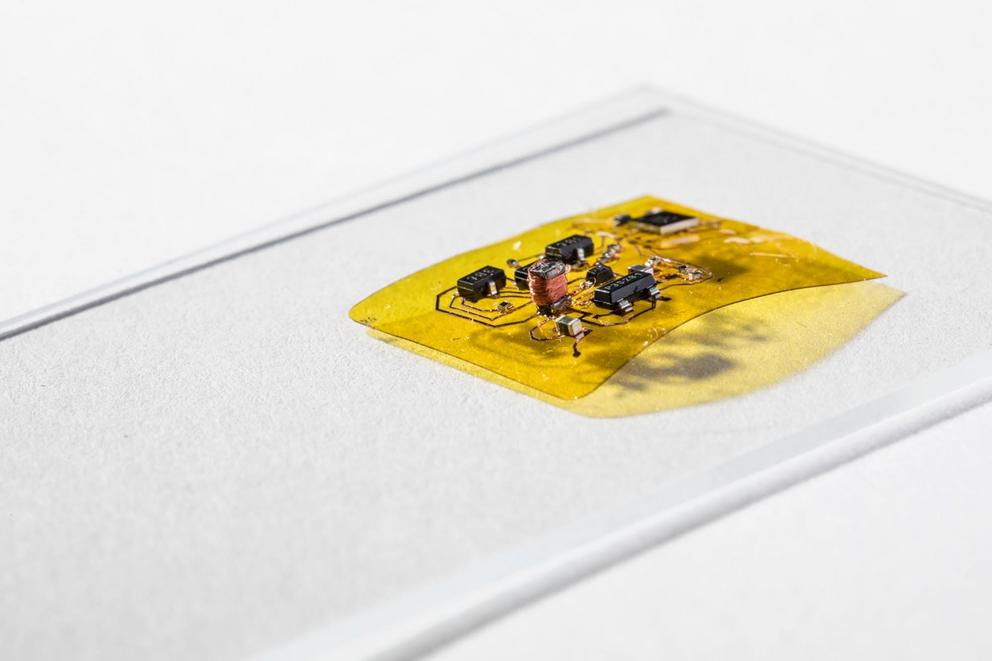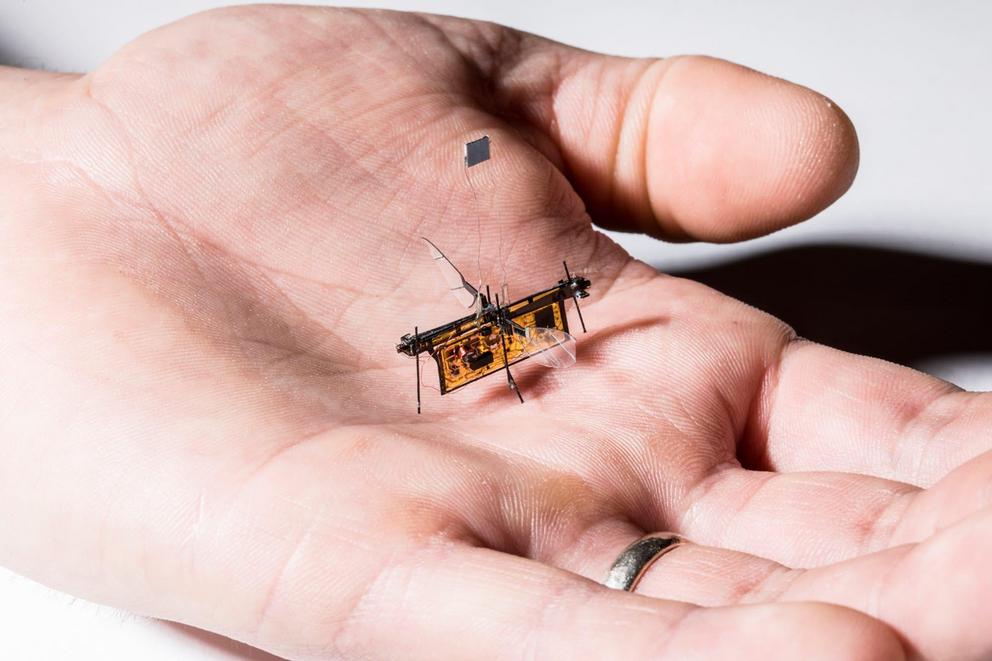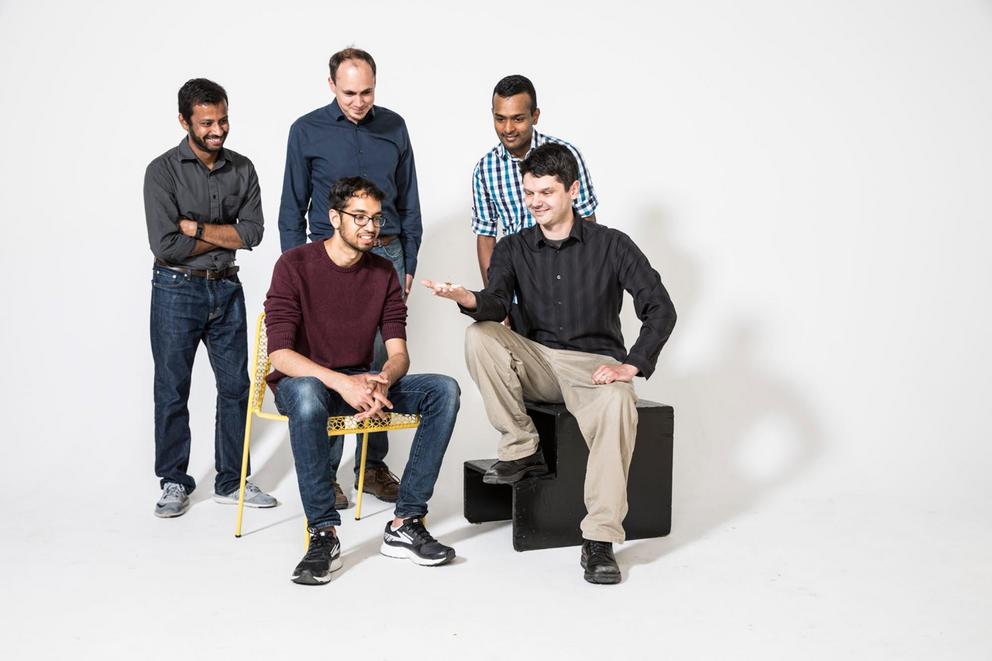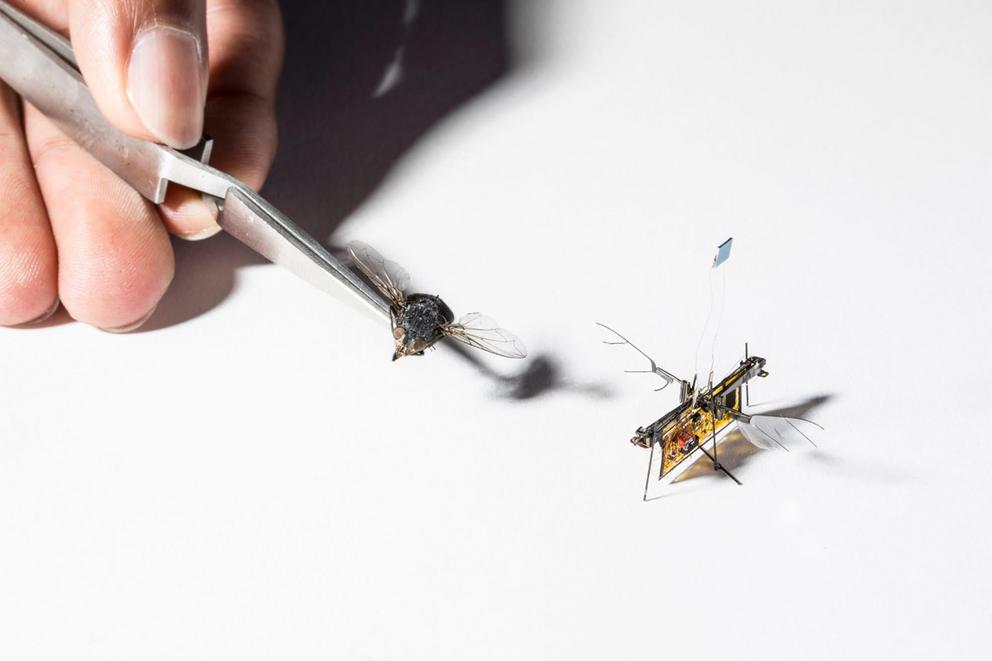RoboFly is first flying-insect micro-robot to go tetherless
You might remember RoboBee, an insect-sized robot that flies by flapping its wings. Unfortunately, though, it has to be hard-wired to a power source. Well, one of RoboBee's creators has now helped develop RoboFly, which flies without a tether.
Slightly heavier than a toothpick, RoboFly was designed by a team at the University of Washington – one member of that team, assistant professor Sawyer Fuller, was also part of the Harvard University team that first created RoboBee. That flying robot receives its power via a wire attached to an external power source, as an onboard battery would simply be too heavy to allow the tiny craft to fly.

The engineers designed a flexible circuit (yellow) with a boost converter (copper coil and black boxes at left) that boosts the seven volts coming from the photovoltaic cell into the 240 volts needed for flight – this circuit also has a microcontroller brain (black square box in the top right) that lets RoboFly control its wings(Credit: Mark Stone/University of Washington)

RoboFly is slightly heavier than a toothpick(Credit: Mark Stone/University of Washington)
Instead of a wire or a battery, RoboFly is powered by a laser. That laser shines on a photovoltaic cell, which is mounted on top of the robot. On its own, that cell converts the laser light to just seven volts of electricity, so a built-in circuit boosts that to the 240 volts needed to flap the wings. That circuit also contains a microcontroller, which tells the robot when and how to flap its wings – on RoboBee, that sort of "thinking" is handled via a tether-linked external controller.

RoboFly is powered by a laser(Credit: Mark Stone/University of Washington)

The RoboFly team – Back row (left to right): Yogesh Chukewad, Sawyer Fuller, Shyam Gollakota; Front row: Vikram Iyer, Johannes James(Credit: Mark Stone/University of Washington)
In its current form, RoboFly can only take off and land, as doing anything else moves its photovoltaic cell out of alignment with the laser. Down the road, though, it is hoped that the laser will be able to track with the robot as it flies, continuously powering it. It's even possible that future versions of the robot might be able to harvest energy from radio frequency signals, using more advanced microcontrollers to autonomously perform tasks in places that traditional larger drones couldn't go.
"I'd really like to make one that finds methane leaks," says Fuller. "You could buy a suitcase full of them, open it up, and they would fly around your building looking for plumes of gas coming out of leaky pipes. If these robots can make it easy to find leaks, they will be much more likely to be patched up, which will reduce greenhouse emissions. This is inspired by real flies, which are really good at flying around looking for smelly things. So we think this is a good application for our RoboFly."
The robot can be seen in action, in the following video.
Source: University of Washington
Video can be accessed at source link below.

